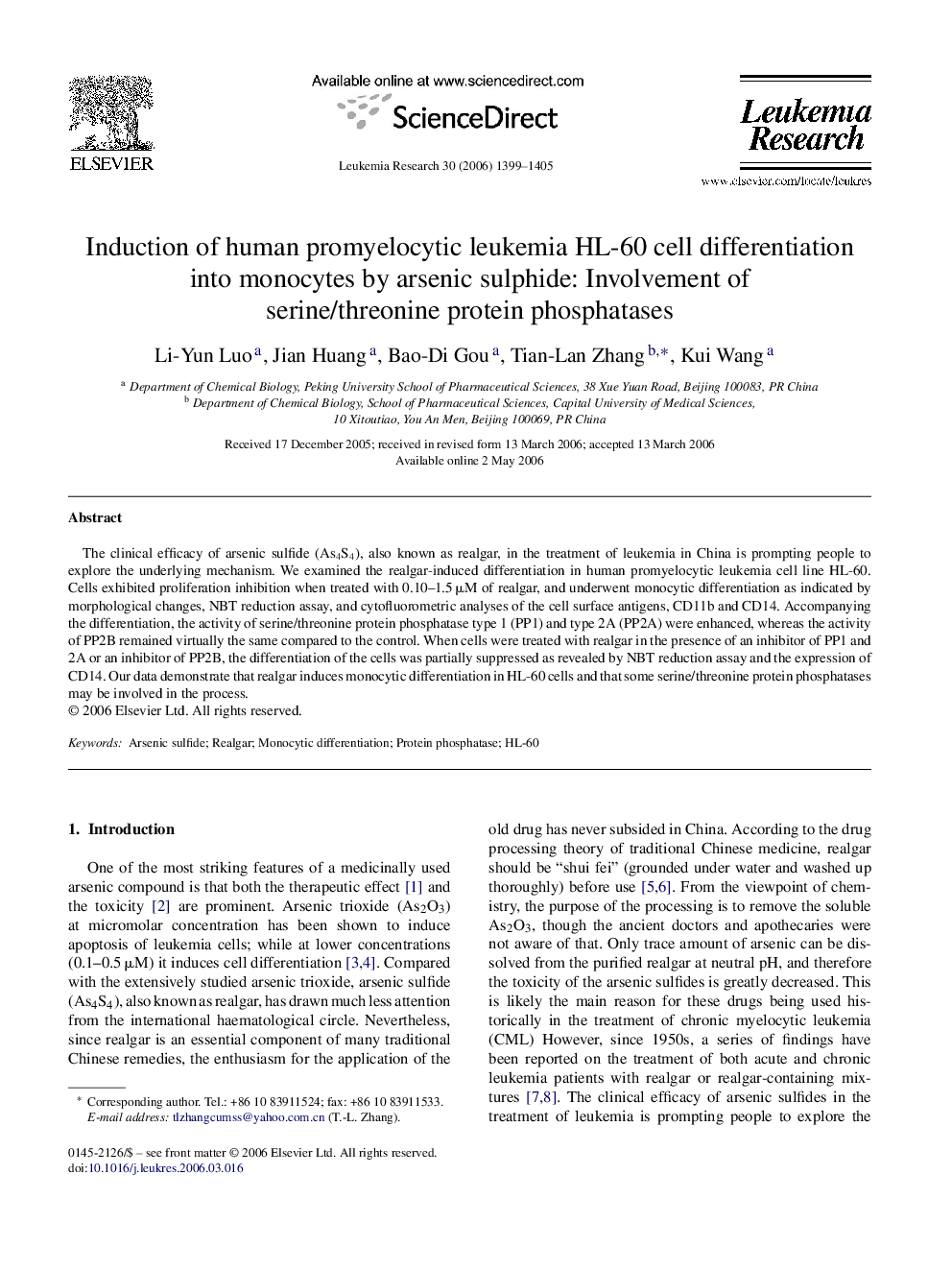| Article ID | Journal | Published Year | Pages | File Type |
|---|---|---|---|---|
| 2138770 | Leukemia Research | 2006 | 7 Pages |
The clinical efficacy of arsenic sulfide (As4S4), also known as realgar, in the treatment of leukemia in China is prompting people to explore the underlying mechanism. We examined the realgar-induced differentiation in human promyelocytic leukemia cell line HL-60. Cells exhibited proliferation inhibition when treated with 0.10–1.5 μM of realgar, and underwent monocytic differentiation as indicated by morphological changes, NBT reduction assay, and cytofluorometric analyses of the cell surface antigens, CD11b and CD14. Accompanying the differentiation, the activity of serine/threonine protein phosphatase type 1 (PP1) and type 2A (PP2A) were enhanced, whereas the activity of PP2B remained virtually the same compared to the control. When cells were treated with realgar in the presence of an inhibitor of PP1 and 2A or an inhibitor of PP2B, the differentiation of the cells was partially suppressed as revealed by NBT reduction assay and the expression of CD14. Our data demonstrate that realgar induces monocytic differentiation in HL-60 cells and that some serine/threonine protein phosphatases may be involved in the process.
